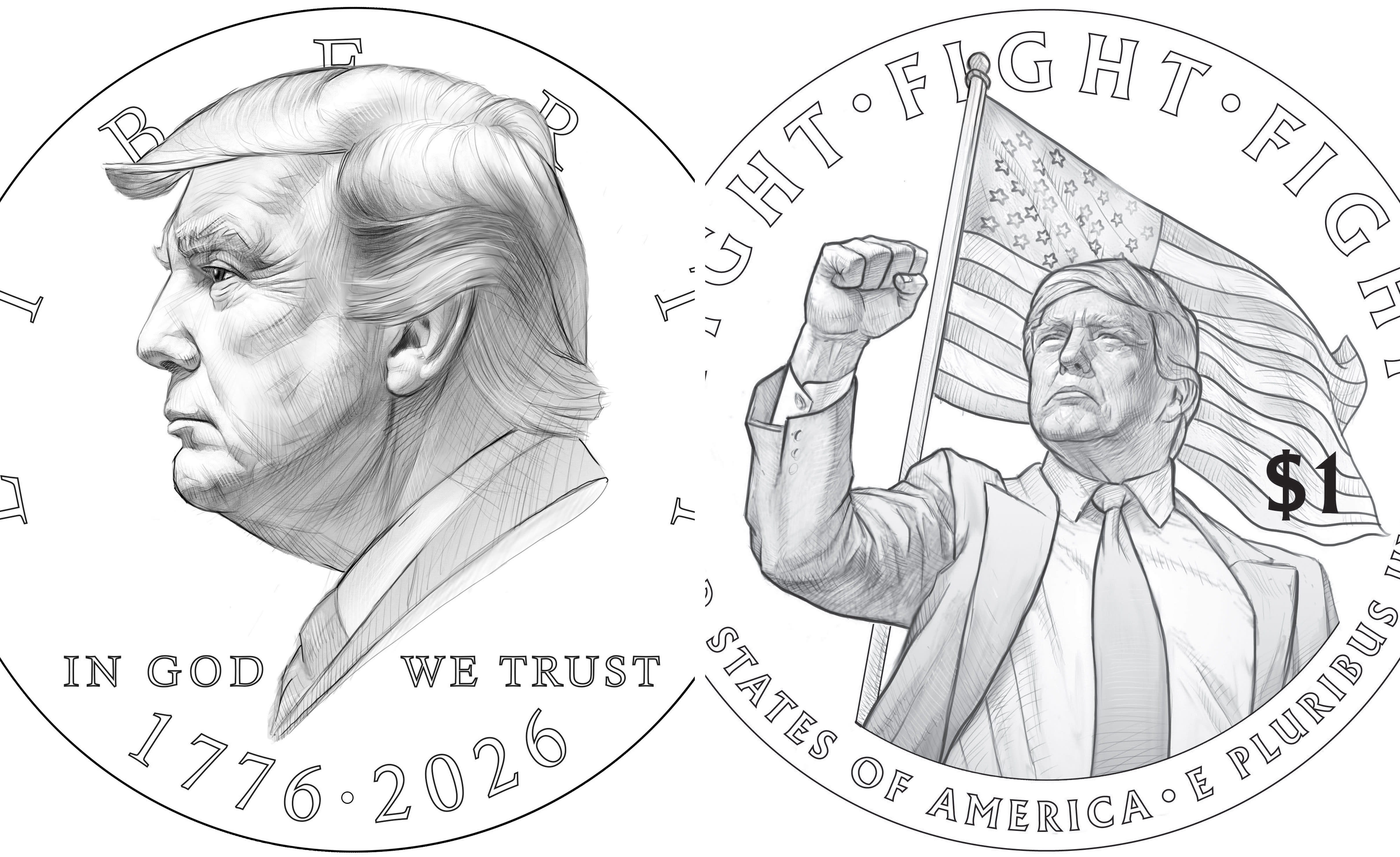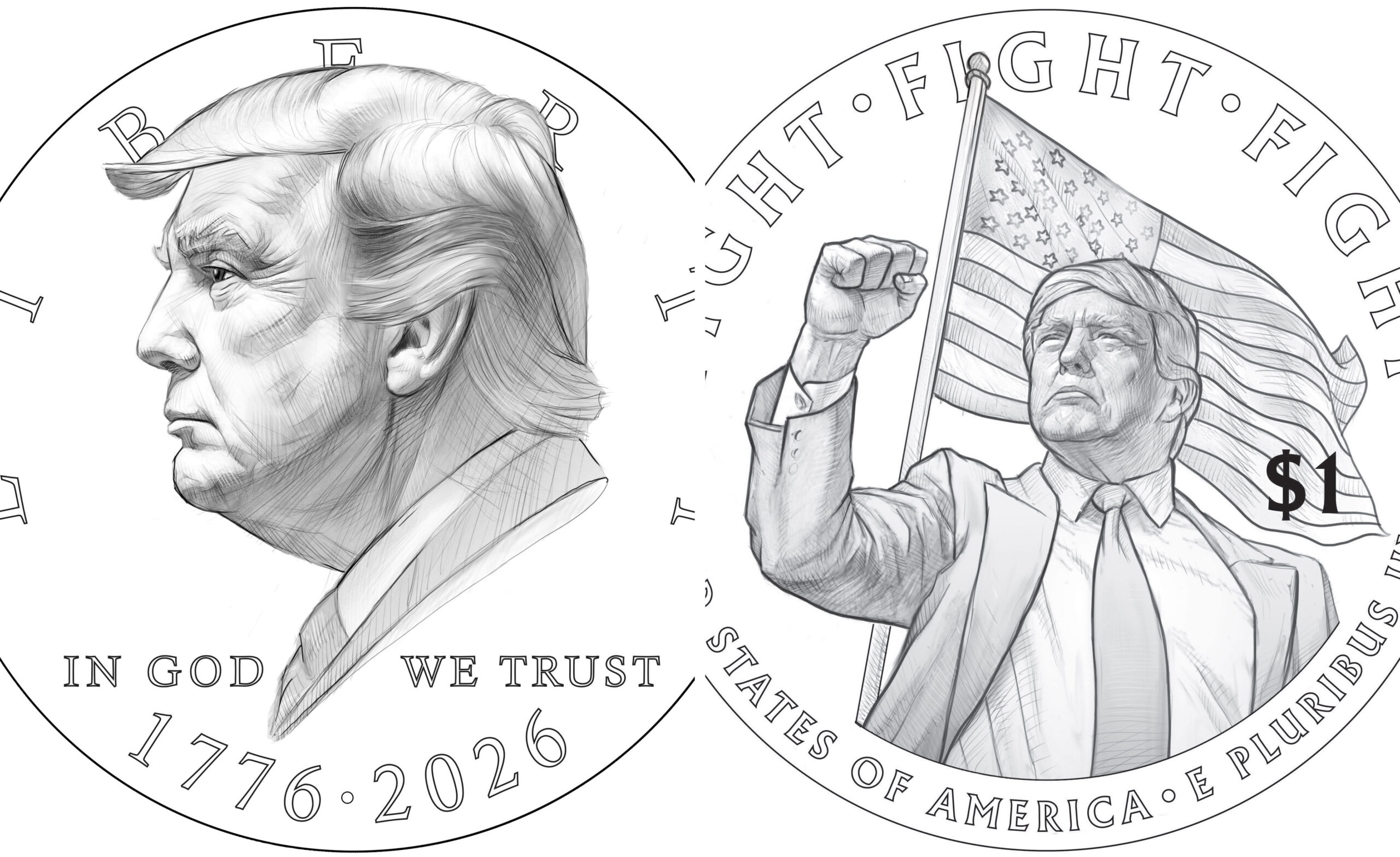
The Treasury Department is considering minting a $1 coin bearing President Donald Trump‘s likeness on both sides to honor him and commemorate the United States’ 250th birthday next year.
A first draft of that coin, which will mark the semiquincentennial anniversary of the nation’s founding, depicts Trump’s head in profile on one side, above the words “IN GOD WE TRUST” and the dates 1776 and 2026.
The other side of the coin shows a defiant-looking Trump raising his fist, closely matching the pose he struck moments after surviving an assassination attempt at a 2024 presidential campaign rally in Pennsylvania.
The words “FIGHT FIGHT FIGHT,” which Trump mouthed to his supporters right after that attack, appear around the edge of that side of the coin.
“No fake news here. These first drafts honoring America’s 250th Birthday and @POTUS are real,” U.S. Treasurer Brandon Beach wrote on X in response to a post touting sketches of the coin.
“Looking forward to sharing more soon, once the obstructionist shutdown of the United States government is over,” Beach wrote.
Treasury Secretary Scott Bessent reposted Beach’s message from his own X account.
A Treasury spokesperson told CNBC that a final design for a $1 coin to commemorate the anniversary has not yet been selected.
But “this first draft reflects well the enduring spirit of our country and democracy, even in the face of immense obstacles,” the spokesperson said, adding, “We look forward to sharing more soon.”
Commemorative coins are legal tender, but they are not minted for general circulation, according to the United States Mint.
It was not immediately clear if the government has created any previous commemorative coins or other coins depicting a living president.
A federal law signed by Trump in January 2021 — just a week before his first term in office ended — allows the Treasury secretary to mint $1 coins “with designs emblematic of the United States semiquincentennial” during the year of the anniversary.
But that same law, under a heading on standards for circulating collectible coins, states, “No head and shoulders portrait or bust of any person, living or dead, and no portrait of a living person may be included in the design on the reverse of any coin under subsections (x), (y), and (z).”
Subsection Y refers to the rules about coins for the 250th anniversary.
That language appears in similar forms in other coin-related laws listed on the U.S. Mint’s website.
The Federal Reserve Bank of San Francisco notes, “To avoid the appearance of a monarchy, it was long-standing tradition to only feature portraits of deceased individuals on currency and coin.”
“That tradition became law with an 1866 Act of Congress,” the Fed bank added.
The Treasury Department did not provide a comment in response to CNBC’s questions about the legality of the draft coin.


